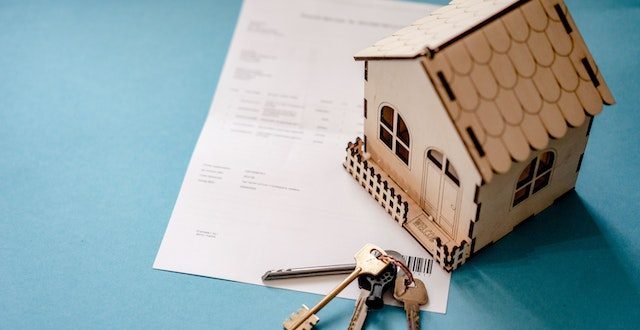The concept of affordability is crucial when it comes to purchasing a house. Potential buyers need to answer important question “how much house can I afford with 100k salary” for example based on their financial situation. Factors such as income, expenses, credit score, down payment, interest rate, location, property taxes and insurance play a crucial role in determining the affordability of a house.
The purpose of this article is to provide an overview of these factors and how they impact the affordability of a house. Additionally, the article will also explain the different calculations involved in determining affordability and a comparison of affordability across different countries.
By understanding affordability, potential home buyers can make informed decisions and avoid overstretching their finances, leading to a successful and stress-free home-buying experience.
How Much House Can I Afford With 100K Salary Considering Factors
The affordability of a house is determined by several factors, including:
Gross annual income
A person’s gross annual income plays a significant role in determining how much house they can afford. Higher income means more purchasing power and the ability to afford a more expensive house.
Monthly expenses
Monthly expenses such as credit card debt, student loans, car loans, and others affect the amount of money a person can put toward a mortgage payment.
Credit score
A person’s credit score is an indicator of their creditworthiness and influences the interest rate offered on a mortgage. Higher credit scores usually lead to lower interest rates, making a house more affordable.
Down payment
A larger down payment reduces the amount of the mortgage and monthly payments, making the house more affordable.
Interest rate
The interest rate on a mortgage is a critical factor in determining affordability. Higher interest rates lead to higher monthly payments and reduce affordability.
Location
The location of a house can also impact affordability, with houses in high-cost areas requiring higher monthly payments and lower affordability.
Property taxes and insurance
Property taxes and insurance add to the monthly costs of homeownership and can significantly impact affordability.
If you are planning on building your own house, it is also worth checking how long does it take to build a house. In proposed article we listed some other factors that may affect affordability.
By considering these factors, potential homebuyers can have a better understanding of their financial situation and determine the amount of house they can afford.
Calculating Affordability

To determine the affordability of a house, two ratios are typically used: front-end ratio and back-end ratio.
Front-end ratio
The front-end ratio is one of the most important metrics lenders use when determining the affordability of a house. It is the percentage of monthly income that goes towards housing costs, such as mortgage payments, property taxes, and insurance. Lenders usually prefer to see this number at 28% or lower, as it indicates a more manageable level of debt and shows that the borrower is less likely to be overwhelmed by their housing expenses.
The front-end ratio takes into account many different factors considered by lenders when assessing one’s ability to afford a house. These include the size of the down payment, credit score, debt-to-income ratio, employment history, and other assets.
A higher front-end ratio often indicates that there are too many expenses associated with buying a home for an individual’s income level and therefore can put them in financial hardship if approved for a loan.
On the other hand, a lower front-end ratio signals to lenders that the borrower is financially responsible and able to comfortably afford their mortgage payments without taking on too much risk.
Back-end ratio
The back-end ratio is the percentage of income that goes towards all debt payments, including housing costs and other debts such as credit card payments, car loans, and others. Lenders typically look for a back-end ratio of 36% or lower.
Calculating both front-end and back-end ratios is crucial in determining affordability. It provides a comprehensive picture of a person’s financial situation and their ability to afford a mortgage payment.
To calculate the front-end ratio, divide the estimated monthly housing costs (mortgage payment, property taxes, and insurance) by the gross monthly income.
To calculate the back-end ratio, divide the estimated monthly debt payments (all debt payments, including housing costs) by the gross monthly income.
By using these ratios, potential homebuyers can better understand their financial situation and determine the amount of house they can afford.
Affordability in Different Countries
The affordability of a house can vary greatly across different countries.
USA
The affordability of a house in the USA varies depending on factors such as location, income, and interest rates. In general, cities on the coasts such as San Francisco and New York have higher housing costs and lower affordability compared to more affordable cities in the Midwest and South.
Canada
Housing costs in Canada are typically lower than in the USA, with cities such as Toronto and Vancouver having higher housing costs and lower affordability than other cities in Canada.
UK
The affordability of a house in the UK varies depending on factors such as location, income, and interest rates. London and other major cities tend to have higher housing costs and lower affordability compared to more affordable regions in the UK.
European countries
The affordability of a house in European countries can vary greatly, with countries such as Germany, Netherlands, and Sweden having relatively high housing costs and lower affordability compared to countries such as Spain and Portugal, which tend to have lower housing costs and higher affordability.
The affordability of a house is influenced by various factors such as income, interest rates, and location, making it challenging to compare affordability across different countries.
However, by considering these factors, potential homebuyers can have a better understanding of the affordability of a house in their country and make informed decisions.
Tools for Affordability Assessment

There are several tools available to help potential homebuyers assess their affordability and determine the amount of house they can afford.
Mortgage calculators
Online mortgage calculators allow potential homebuyers to input information such as income, monthly expenses, down payment, and interest rate to estimate monthly mortgage payments and determine affordability.
Pre-qualification and pre-approval
These processes involve working with a lender to determine the amount a potential homebuyer can borrow and their affordability.
Budgeting tools
Budgeting tools help potential homebuyers track their monthly expenses and understand their overall financial situation, allowing them to make informed decisions about their affordability.
Affordability apps
There are several apps available that use algorithms to help potential homebuyers determine their affordability and provide recommendations on the amount of house they can afford.
By using these tools, potential homebuyers can better understand their financial situation and make informed decisions about their affordability.
How Much House Can I Afford With 100K Salary
The amount of house you can afford with a 100k salary depends on several factors such as your location, monthly debts, savings, down payment, and the type of mortgage. Here are some general guidelines:
USA
In the United States, it is generally recommended that households should spend between 28% and 33% of their gross annual income on housing expenses. This means that if you have a salary of $100,000 per year, you may be able to afford a home costing up to $33,000 – $40,000 annually.
While this figure is a good guideline to follow when estimating your budget for housing costs, it is important to be mindful of other factors that can influence your affordability such as income taxes and additional living expenses. It might also be beneficial to consider what percentage of income you can save from month to month to adjust the amount you allocate for housing costs.
Canada
A commonly used guideline is to spend around 32-40% of your gross income on housing expenses. This means you may be able to afford a house costing up to $40,000 – $50,000 per year.
In Canada, the commonly recommended guideline is to spend approximately 32-40% of your gross income on housing expenses. This means that people who earn a higher annual salary may be able to afford a house costing up to $40,000 – $50,000 per year. Although this is an accepted benchmark, it is important to remember that individual circumstances can significantly affect one’s ability to meet these costs.
Prospective homeowners should bear in mind that the type of loan they opt for can have an impact on their total monthly mortgage payments. For example, those looking for long-term financial security may choose a fixed-rate mortgage with longer repayment periods. However, this will mean paying more money over time due to interest charges. Alternatively opting for an adjustable rate plan could result in lower payments initially but greater risks down the line due to fluctuating interest rates.
UK
In the United Kingdom, it is generally advised that individuals should aim to spend around 30% of their gross income on housing expenses. This means that someone earning a salary of £100,000 a year, could hope to purchase a home costing up to £30,000 per annum.
For most people in the UK, this 30% figure applies unless they are earning significantly more than the average national wage. In such cases, it may be possible to spend slightly higher amounts without putting too much strain on one’s finances. However, it is important to remember that allocating too much of one’s income towards housing costs can leave little left over for other necessary expenditure such as daily living costs or savings.
Conclusion
In conclusion, prospective homeowners need to take into account their current financial situation and available government incentives when setting out a budget for housing costs. This will help them determine the maximum amount that they can afford and ensure that they are making an informed decision when purchasing a property.
It is also vital that they consider other expenses such as income taxes, daily living costs, and any existing debts. By doing so, households should be able to set a realistic budget which will enable them to make the most of their available funds and ultimately purchase a home that is suitable for their needs.

